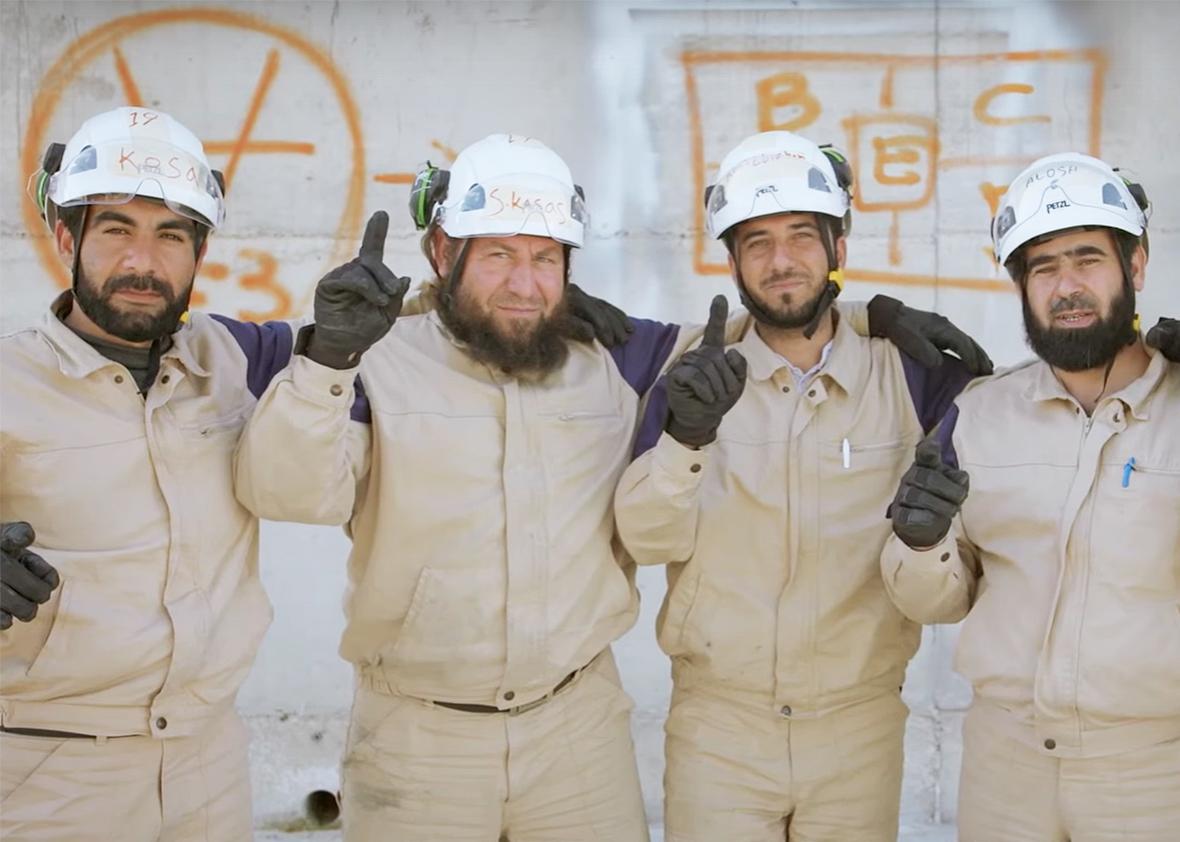As a fragile cease-fire in Syria looks to be on the verge of unraveling, threatening to bring a new round of violence to the besieged city of Aleppo, a new film shows in gripping detail what the war looks like from the city’s streets. The White Helmets, which premiered on Netflix on Friday, focuses on a team of volunteer rescue workers responding to bombings by the Syrian regime and Russian air force in Aleppo, pulling civilians out of the rubble and providing first aid. Founded in 2013, the White Helmets, officially called the Syria Civil Defense, are often the only emergency first-responders available in rebel-held areas of Syria and claim to have saved more than 58,000 lives. More than 130 of them have been killed over that time. They’ve been nominated for the Nobel Peace Prize.
The White Helmets was directed by Orlando von Einsiedel and produced by Joanna Natasegara, the Oscar-nominated team behind the 2014 documentary Virunga, but the most dramatic footage, taken during the rescues in Aleppo, was filmed by the White Helmets themselves. Chaotic and visceral, the footage of the aftermath of Syrian President Bashar al-Assad’s regime’s barrel bombings and Russian strikes is the antithesis of the clinical aerial footage that has dominated much of the coverage of the Syrian war. One memorable shot patiently tracks a bomb on its long descent from the plane that drops it to the ground.
Einsiedel says he first became interested in telling the White Helmets’ story after “both myself and Joanna saw a grainy YouTube clip of a 1-week old baby being pulled out of the rubble of a three-story building. That left a real mark on us.” The 2014 rescue of the “miracle baby,” Mahmud—who was the subject of a 16-hour rescue operation—is the emotional center of the film. Recently, the White Helmets found themselves in the news once again when a photo of a bloodied and dust-covered boy sitting in an ambulance after being pulled from the rubble in Aleppo went viral around the world.
In addition to the Aleppo footage, the film also follows a group of White Helmets at a training course in Turkey. The men often seem ill-at-ease being away from what’s going on back home. “It was a very interesting thing that they would rather be in Aleppo saving more lives than in Turkey getting a respite. Their dedication was so complete that all they could do was wait to get back to Aleppo,” Natasegara told me in an interview. None of the White Helmets had previous training as rescue workers before the war. One was a former rebel fighter who decided he’d rather focus on saving lives. But despite their relative inexperience, they seem remarkably matter-of-fact about the horrors they witness on a daily basis, as well as the risks facing them and their families.
“We went into this thinking that we could probably handle it, but we were all taken back by just how devastating it was being with these guys and really seeing what they go through every day,” Einsiedel said.
The director explained that the film aims to tell a different kind of story about Syria, a conflict so bafflingly complex and seemingly hopeless that many would surely prefer to block it out. They wanted to tell a story that didn’t just exclusively focus on ISIS or terrorists or even just refugees. “Those are clearly important stories,” Einsiedel said, “but what’s happening to people every day on the ground with hundreds of bombs being dropped on them by the Assad regime and its allies, that’s a story that seems to have faded from the headlines.”
